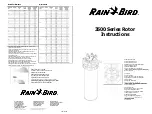
Toolbar
Reference Manual
TF Series
- 18 -
MONITOR screen
Allows you to manage cue and monitor signals and to control oscillators.
The CUE/MONITOR screen is used to control the signals that are monitored using
headphones and near-field monitors. Here you can select the sources that will be
continuously monitored, and select individual channels for monitoring using the CUE feature.
The OSCILLATOR screen is used to configure the oscillator and turn it on and off. The console
has a built-in oscillator that can output a sine wave or pink noise to the desired bus, allowing
you to check external devices or test the characteristics of a venue.
CUE/MONITOR screen
Allows you to monitor certain inputs using headphones or speakers. You can select which
sources will be monitored, change the monitor signal to mono, or add a delay.
1
CUE mode button
Used to select the CUE mode.
Mix CUE
: Enables cue for multiple channels.
Last CUE
: Enables cue for the last channel selected.
2
CUE point selection buttons
Selects the point in the signal path that will be monitored.
PFL
: Before the fader
AFL
: After the fader (inputs are PFL only)
3
Mono button
Allows you to change the monitor signal to mono.
4
Delay button
Delays the monitor signal.
5
Monitor output button
Turns the monitor output on and off.
The signal is output from the [PHONES] jack regardless of this setting.
6
Monitor level meter
Displays the monitor level.
7
Monitor level slider
Adjusts the monitor output level.
The signal is output from the [PHONES] jack regardless of this setting.
8
Clear CUE button
Cancels all cue selections.
9
Delay setting
Determines the delay time by specifying distance (meters or feet) or time (milliseconds).
Touch a text box to display the keyboard and enter a value. (
0
Monitor selection buttons
Allow you to select the sources that will be monitored.
ձ
ղ
ճ
մ յ
ն
շ
ո
չ
պ
















































